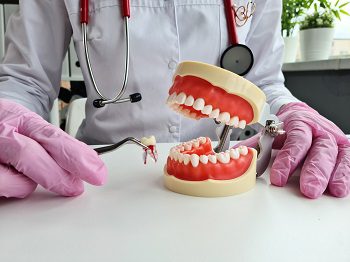What is a Tooth Extraction Procedure, and Why may you need It?
It may seem needless or uncomfortable if you’ve never had a tooth extracted. The dentist will discuss the tooth extraction procedure with you beforeha...

It may seem needless or uncomfortable if you've never had a tooth extracted. The dentist will discuss the tooth extraction procedure with you beforehand and make sure your appointment is as peaceful, quick, and painless as possible. To remove a tooth, a dentist or oral surgeon uses either local, general, intravenous, or a mix of these for short, painless outpatient treatment. Extraction of visible teeth is routine. Procedures involving impacted, fractured, or otherwise compromised teeth are more complex.
Reasons for Tooth Extraction
While wisdom teeth extraction is common among teenagers and some adults, there are other instances where an adult might need a tooth out. Fillings, crowns, and other dental work can often restore teeth that have been fractured or decayed. However, there are some times when the damage is too significant, and an extraction is required.
Tooth extraction may be necessary due to severe decay, infection, or crowding. Bracket wearers often need at least one tooth extracted to make space for their new, straighter smile. In addition, people preparing for an organ transplant or enduring chemotherapy may need damaged teeth extracted for oral health.

The Tooth Extraction Procedure
Your dentist will examine your medical and dental records and take necessary X-rays before extracting a tooth. Radiographs can show a tooth's exact size, shape, location, and surrounding bone. Your dentist will use this data to decide whether or not to refer you to an oral surgeon for an extraction.
Usually, dentists or oral surgeons (dentists who have completed additional surgical training) perform a tooth extraction. Your dentist will inject a local anesthetic into the gum tissue around the tooth extraction site to numb the area. Your dentist may choose to use powerful general anesthesia if necessary. It keeps you pain-free and asleep for the entire procedure.
Using forceps, the dentist gently moves the impacted tooth back and forth to free it from the jaw bone and ligaments. Sometimes hard-to-pull teeth extraction is done by breaking the tooth into parts. Blood clots occur in the tooth socket after extraction. The dentist will place gauze in the space and have you bite it to halt the bleeding. The dentist may use self-dissolving sutures to seal the gums over the extraction site.
Does tooth extraction have any risks included?
Pain, swelling, bruising, bleeding, and infection are common after-effects following tooth extraction. Local or general anesthesia is helpful to numb the area around the tooth or to ensure the patient is comfortable during the extraction. Damage to the mouth, nausea, and dizziness are all possible side effects of the anesthetic.
Most patients will temporarily feel discomfort from localized pain, swelling, and bruising, but these adverse effects will fade. Medication such as anti-inflammatories and pain relievers can temporarily relieve these signs and symptoms. The less usual complications of continued bleeding and infection of the area may necessitate additional therapy, such as antibiotics.
Aftercare
A dentist will send you home to rest after the tooth extraction procedure. Recovery usually takes a few days. The following measures can ease suffering, lessen the likelihood of infection, and expedite healing:
- After a dentist places gauze over a cut, biting on the pad helps halt the bleeding and build a clot. Keep the gauze on for three to four hours until it's soaked with blood.
- Take prescribed and over-the-counter drugs as directed.
- After the surgery, use an ice pack to decrease swelling, ten minutes per use.
- Relax and take rest after the extraction of the tooth.
- Don't rinse for the next 24 hours after the tooth extraction, and spit gently.
- After surgery, eat yogurt, pudding, and or soft-swallowing food.
- After 24 hours, rinse your mouth with half a teaspoon salt in warm water.
Conclusion
Tooth extraction can be a scary experience for anybody. Still, whether you've done it before, following your dentist's pre-and post-operative instructions is the quickest way to ensure a smooth recovery. The post-surgery instructions a dentist gives for a healthy recovery are essentially the same regardless of which method was used to remove the tooth. A healthy, self-assured grin is worth more than a few compromised teeth, and tooth extraction clears the way for better things.
Contact your dentist in Walnut Creek, Dr. Tiziana Procopio Towle, DDS at Procopio Dental Office, to know more about the tooth extraction procedure and why you may need it.
Resource:
Types Of Teeth Whitening Procedures
*This media/content or any other on this website does not prescribe, recommend, or prevent any treatment or procedure. Therefore, we highly recommend that you get the advice of a qualified dentist or other medical practitioners regarding your specific dental condition*
Get to know us
The best and gentle Dentists and Team Member of Procopio Towle Dental Office are dedicated to providing top quality dental care to patients in Walnut Creek the surrounding San Francisco Bay Area.
Meet Our Dentist



